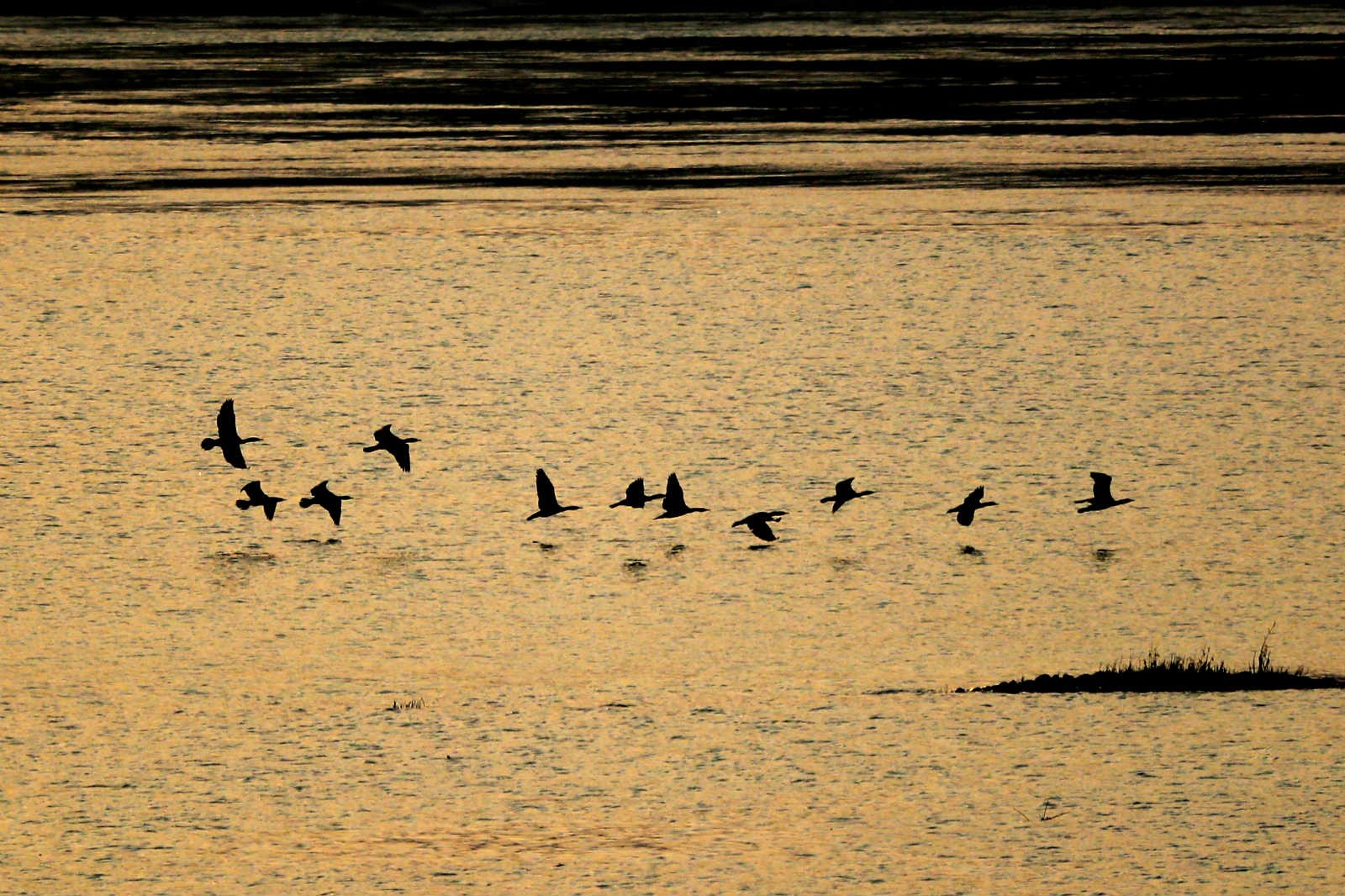

 |
| Photo taken on Nov. 20, 2020, shows mallards and other wild birds hovering above the section of Yangtze River in Caoxi village, Luzhou city, southwest China''s Sichuan province. (People''s Daily Online/Mu Ke) |
China is ramping up efforts to improve the ecology of its major waters, especially the Yangtze River, the longest river in China, and the Yellow River, China’s second longest river.
Last month, China released its newly adjusted list of wild animals under State priority conservation, which indicates that the protection of Yangtze finless porpoise, an endangered species in the Yangtze River, has been upgraded from the second level to the highest level.
The news gives great joy to Xu Xudong, a member of the National Committee of the Chinese People's Political Consultative Conference (CPPCC), who has always been concerned about the ecology of the Yangtze River.
Through in-depth investigations, Xu, also a researcher with the Institute of Hydrobiology under the Chinese Academy of Sciences, found that the population of the Yangtze finless porpoise, an important indicator of the health of the Yangtze River ecosystem, has been put at risk and the aquatic community in the river declined over the past several years.
Therefore, Xu has repeatedly submitted proposals suggesting upgrading the protection of the Yangtze finless porpoise from the second level to the first level during the annual sessions of the National Committee of the CPPCC.
"By protecting the Yangtze finless porpoise, we are also protecting the Yangtze River. A sound Yangtze River ecosystem not only means an ever-flowing river with clear water, but also thriving biological communities," said Xu.
Xu is full of confidence in the protection of the Yangtze River ecosystem, as a series of relevant measures have been taken this year.
On Jan.1, 2021, China’s central government imposed a complete 10-year fishing ban in key waters of the Yangtze River. Later on March 1, the Yangtze River Protection Law officially took effect.
During the just-concluded annual session of the National Committee of the CPPCC this year, Xu suggested relevant authorities issue guidelines on the ecological restoration and assessment of inland waters and urge local governments to include biological indicators such as habitat restoration and biodiversity in their river governance evaluation systems so as to guarantee full implementation of measures for restoring the ecology of the Yangtze River.
Zhao Qingfeng, also a member of the National Committee of the CPPCC and former head with the state-owned forest farms and forest seeds and seedlings station in northwest China's Ningxia Hui autonomous region, has engaged herself in protecting the ecology of the Yellow River.
"I grew up by the Yellow River and have become very attached to the river," Zhao said, adding that the Yellow River, known as the mother river of the Chinese nation, requires meticulous care and protection.
Zhao noted that in recent years, Ningxia has taken measures to return farmland to wetland and the land for breeding and raising to beaches in the Yellow River basin.
Santangdun village in the wetland area of Qingtongxia reservoir along the Yellow River returned 10,500 mu (about 700 hectares) of farmland to wetland, according to Zhao, who disclosed that for each mu of farmland returned, villagers can get 300 yuan ($46.11) in compensation.
They have used the compensation to develop green agriculture, and planted 7,000 mu of organic apple trees. Meanwhile, the village has used part of the compensation to establish a cold-chain system for the purchase of apples. The system has also solved the problem of the storage and transportation of the fruit.
The governance of the Yellow River embodies systematic thinking, according to Zhao, who explained that as a systematic project, ecological protection requires equal attention to the conservation and restoration of the ecosystems of mountains, rivers, forests, lakes farmland and grassland, and proper handling of the relationship between man and nature.
At this year’s annual session of the National Committee of the CPPCC, she proposed that continuous efforts be made to strengthen the implementation of major projects for the protection and restoration of important ecological systems and improve the efficiency of ecological management of the Yellow River.
Thanks to China’s unremitting efforts, the water quality of the country’s major rivers, lakes, and coastal waters has improved constantly.
In 2020, 83.4 percent of the assessed 1,940 surface water sections across the country were categorized as good quality (Grade I to III), an increase of 8.5 percentage points year on year.
Only 0.6 percent of the assessed surface water sections were categorized as Grade V, the standard for poorest water quality in China, down 2.8 percentage points compared with the previous year.

 Award-winning photos show poverty reduction achievements in NE China's Jilin province
Award-winning photos show poverty reduction achievements in NE China's Jilin province People dance to greet advent of New Year in Ameiqituo Town, Guizhou
People dance to greet advent of New Year in Ameiqituo Town, Guizhou Fire brigade in Shanghai holds group wedding
Fire brigade in Shanghai holds group wedding Tourists enjoy ice sculptures in Datan Town, north China
Tourists enjoy ice sculptures in Datan Town, north China Sunset scenery of Dayan Pagoda in Xi'an
Sunset scenery of Dayan Pagoda in Xi'an Tourists have fun at scenic spot in Nanlong Town, NW China
Tourists have fun at scenic spot in Nanlong Town, NW China Harbin attracts tourists by making best use of ice in winter
Harbin attracts tourists by making best use of ice in winter In pics: FIS Alpine Ski Women's World Cup Slalom
In pics: FIS Alpine Ski Women's World Cup Slalom Black-necked cranes rest at reservoir in Lhunzhub County, Lhasa
Black-necked cranes rest at reservoir in Lhunzhub County, Lhasa China's FAST telescope will be available to foreign scientists in April
China's FAST telescope will be available to foreign scientists in April